London Recorders Day is an annual collaborative event from GiGL, the FSC BioLinks Project and the Natural History Museum. It brings together wildlife recorders across the capital to discuss exciting projects and initiatives through incredible speakers and interactive sessions. This year we celebrated “The Uses of Data” with a variety of speakers across a range of subjects relating to creating, sharing and using biological records in a practical way. Held on the 30th October, this year was a hybrid event, with attendees joining both in person and online. Victoria Kleanthous, GiGL’s Community Officer who helped everything run smoothly on the day, gives us a summary of the day’s events.
Links to recordings of the days talks and more information on the speakers can be found here.
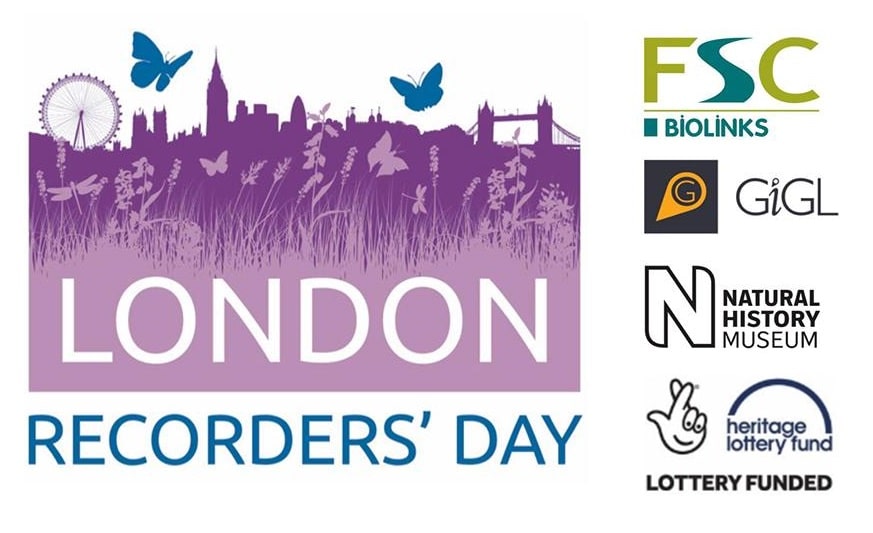
Though it has been a long time since we last met, the atmosphere at London Recorders Day (LRD) 2021 was that of a reunion of old friends, united by a shared passion for recording, studying and protecting the wondrous nature of Greater London. This community spirit has persisted in the face of a world that feels like a very different place to how it did in 2019; internationally we have begun to see the effects of crossing multiple planetary boundaries and have all, of course, now experienced and continue to experience the effects of a global pandemic.
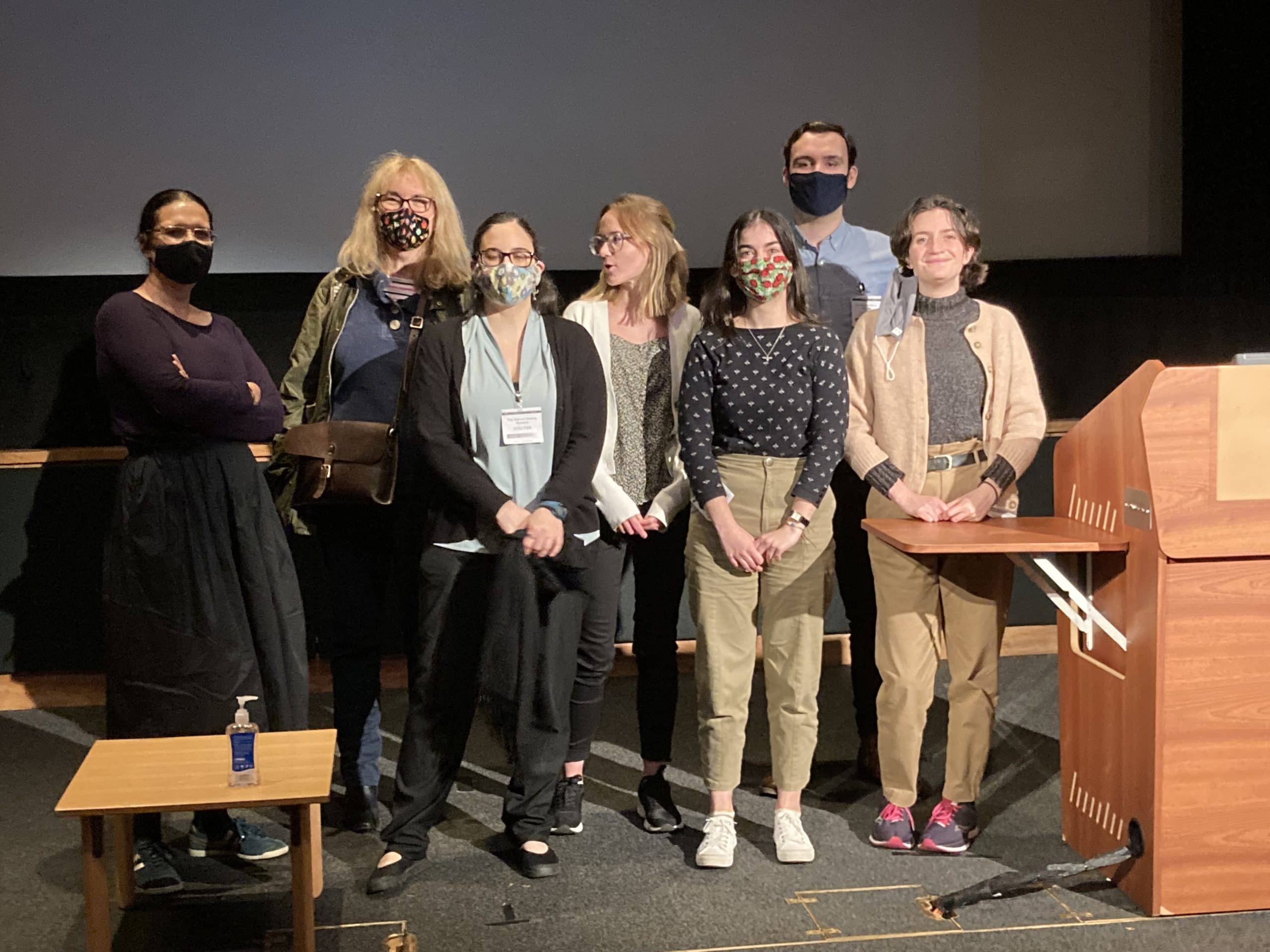
COP26, looming large, was ready to kick off in Glasgow the following day, and listening to the stories, projects and passion shared at LRD 2021, I found more reasons than I thought possible to remain hopeful. The committed, sustained and effective action required to reverse the effects of climate change and biodiversity decline can already be seen within the recorder and citizen science communities.
The practice of systematic biological recording has a long, illustrious history, and we had representatives of some of London’s oldest recording institutions present on the day. The curiosity and dedication of these early recorders established the methodologies, infrastructure and impassioned recorder base that has helped enable all the projects featured at LRD 2021, as well as the formation of GiGL and our partner organisations the Angela Marmot Centre for UK Biodiversity based at the Natural History Museum (NHM) and the Field Studies Council (FSC). Both partners were integral to the organisation and execution of the day, with the museum providing the NHM Flett Lecture Theatre as our physical venue and FSC providing their invaluable expertise to enable our first hybrid virtual event to be a success. A particular thanks goes to Stephanie Holt of NHM who worked through illness to make the day happen.
Ecological data in its various forms and origins is the foundation upon which we can rebuild and restructure our world around ecological and wellbeing needs, particularly through conservation, planning and development. Through the work of thousands of volunteers and millions of records shared among our community, the natural world can be considered in its true complexity and value. LRD 2021 was a day to celebrate this work and provide an insight into the myriad ways in which ecological data is used within London to protect, enhance and understand our precious natural spaces and species.
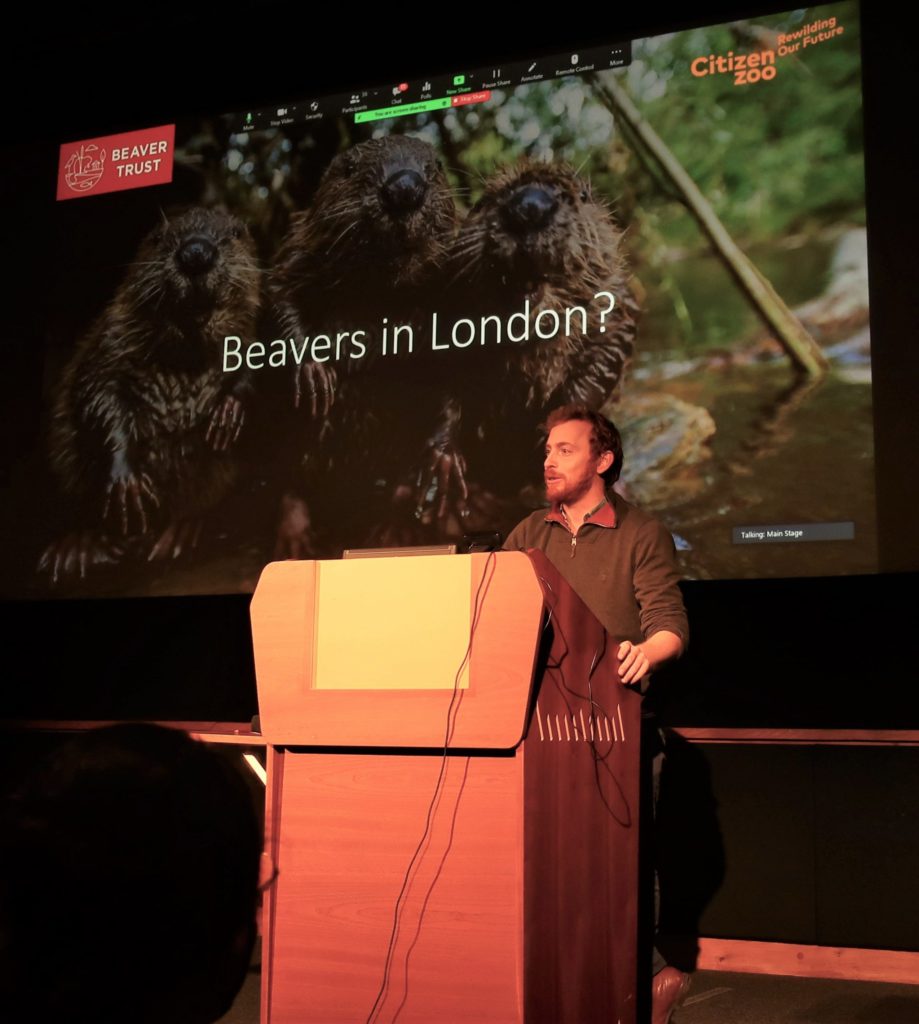
Elliot Newton, co-founder of Citizen Zoo, returned to start the day with a focus on the aquatic environment; after the success of the InVole project, Elliot has turned his attention to the reintroduction and fruitful re-integration of beavers within Greater London, following their extinction over 400 years ago from the UK. Beavers construct dams to hide from predators, but the ecological effects of the dams are wide ranging and earn beavers the title of ‘ecosystem engineers’ – organisms that alter their environment, landscapes and co-habiting species in complex ways. As a result of dam construction, beavers deepen regions of water courses, creating wetlands as they do so, providing shelter for developing fish, amphibians and invertebrates as well as food for their predators. Through ecosystem transformation, beavers also help to sustain ecosystem services beneficial to humans such as carbon sequestration, downstream flood prevention and drought resilience.
Elliot’s talk illustrated a key theme of the day – that now is the time to re-align our human priorities with those of the natural world, to adapt our behaviours and environments, not just for our own species, but for all those present in London. While we eagerly await beaver arrival (or return) from Kent to facilitate this rebalancing act, habitat and species data will be key to helping beavers recolonise the most suitable sites in London, map any resultant changes to waterways and monitor any burgeoning beaver populations – a mass collaborative effort that GiGL is excited to continue to support.
One of the most inspiring talks of the day – Katie Boyles’ ‘How Warren Farm was saved from the developers’ – also spoke to how environmental recording and collaboration form the foundation for protecting our wild spaces for needs other than our own. Beginning by walking her dog around Warren Farm, Katie has worked as part of a dedicated team of community activists, recorders, entomologists, photographers and in collaboration with organisations including the RSPB, GiGL and the Met Wildlife Crime Unit, to protect the diverse and treasured 61 acres of this site, preventing its development into a leisure centre.
With luck, the site should soon attain Local Nature Reserve Status as a result of the tireless work done to record the wildlife living there. Before Katie and her army of volunteers began to religiously record all the species found on Warren Farm, both common and rare, GiGL held no records for the site. Due to this, and without the completion of a thorough ecological survey for the area, it was deemed of ‘little ecological value’ and was sold off for a peppercorn rent. By the end of the work over a six month period, that number rocketed till Warren Farm was the site of the greatest number of records held within GiGL databases. Collaboration between locals and experts allowed plants originally listed as Ethels and Berts to be given species names (ground ivy and germander speedwell respectively), nationally rare plants revealed themselves and skylark nesting sites were properly protected throughout the breeding season.
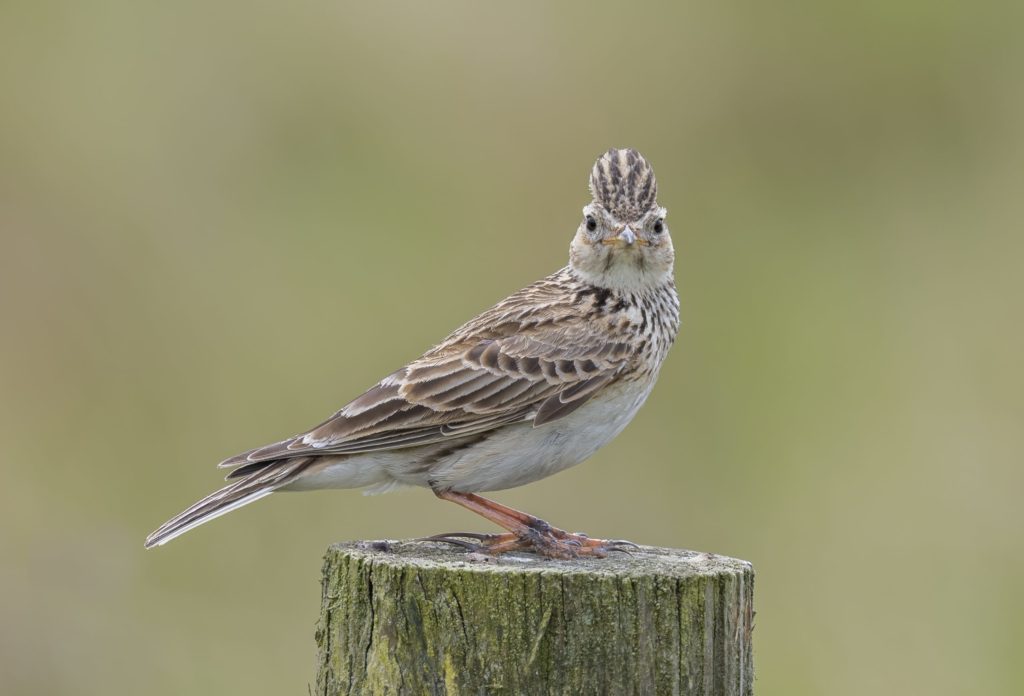
Even in the face of a seemingly impossible environmental challenge, people can come together joined in inspiration and awe. Every single record and species verification has real implications for the protection of London’s precious green and natural spaces. Through this data collection, we can help prevent what almost occurred at Warren Farm from happening elsewhere in London.
However, it is not just down to the voluntary guardians of these sites to ensure their protection. As GiGL’s Eleni Foui illustrated in her talk on the GiGL Data Search Service, Local Planning Authorities, developers and the consultant’s employed by them have a real responsibility to embed ecological data into all stages of the planning and development process. It is clear that there is no lack of motivation on the part of the general public to know, understand and document their natural spaces but as shown by Eleni, this is not consistent through the entirety of the planning process. Research conducted by GiGL and the Greater London Authority in 2016 showed that, though ~18% of suitable planning applications should have consulted with GiGL as part of a baseline desk-top study, only ~1% of these applications actually did. More on Biodiversity Evidence – Better Outcomes from Planning project can be found here.
While there may be disconnect between the collection of data and its use throughout the entire planning process, by ensuring that the records that we continue to collect are as informative and comprehensive as possible, we can build the most accurate picture of urban nature. The end uses of data are critical to informing data collection and the aggregation best practice, and several LRD speakers presented projects that aim to improve expansive and strategic data collection.
The DECIDE Project, presented by Michael Pocock, is working towards generating more equitable recording effort across the country. The probability of a species occurring in any given area can be more accurately predicted by integrating presence and absence records, with recording effort values and other site information, such as habitat and climate data. This produces high resolution species distribution maps across the country, filling in recording gaps and increasing the resolution that can be low in more traditional point maps. Importantly, these probability maps show the uncertainty associated with different distributions – uncertainty that can be greatly reduced through re-directed recording effort, signposting recorders to areas that need the most attention through the DECIDE app.
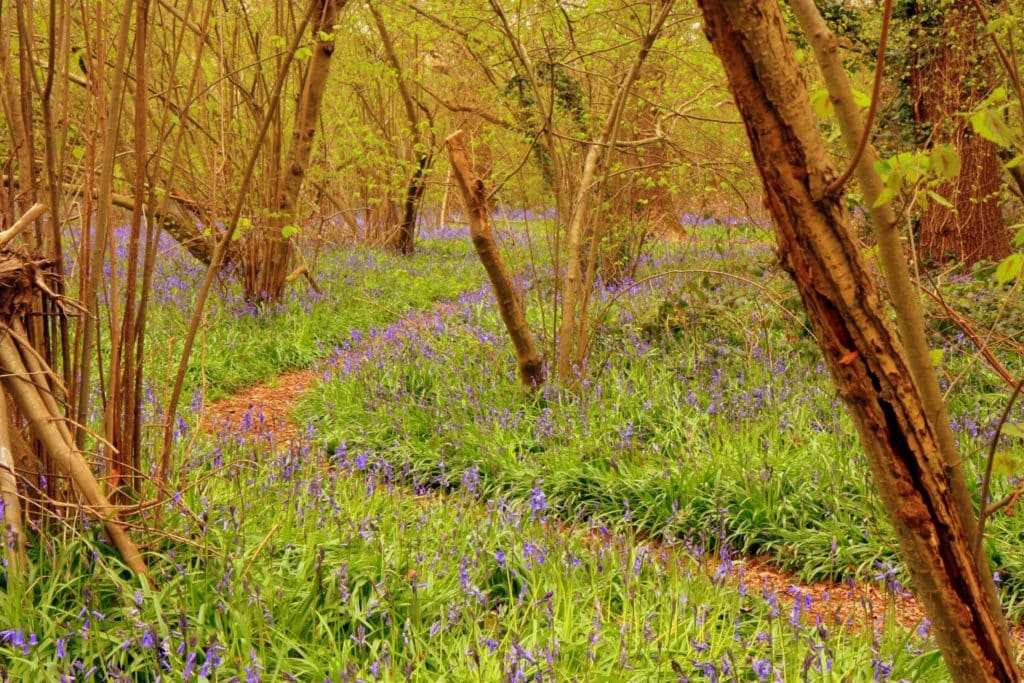
David Horton of the Selborne Society also spoke of temporal concerns when recording Lepidoptera in Perivale Woods and the importance of strategic data collection. As one of the longest running privately managed nature reserve in England, Perivale Woods has a long and impressive history of conservation and site management in an urban setting. Due to the commitment of many volunteers and employees of the reserve, innovative methods of moth and butterfly data collection have been trialled, ranging from standard transect sampling and light traps to using a drone to obtain species counts at the canopy-level of the wood. All these different methods of collection have their strengths and weaknesses which must be considered so that each method can be applied appropriately and effectively to different areas.
New types of data collection can also be expected from the recently launched Urban Nature Project, which we learned about in a talk from John Tweddle of the Angela Marmont Centre, AMC. Over the next 5 years, this project will seek to increase the diversity of ecological data that is collected. They also aim to train volunteers to collect new types of data, such as eDNA that can improve detection of small and elusive, aquatic and soil organisms and microorganisms, and eAcoustic sound data for monitoring our more vocal species. By increasing the range of sampling techniques available to Citizen Scientists, it is hoped that the project can begin to balance the recording bias for mammalian, bird and plant species.
The project also aims to greatly increase the accessibility of recording as a way to better connect city-dwellers to urban nature – both through improving access to knowledge, volunteering and professional opportunities to people under-represented within the sector, as well improving the physical access to NHM’s wildlife garden.
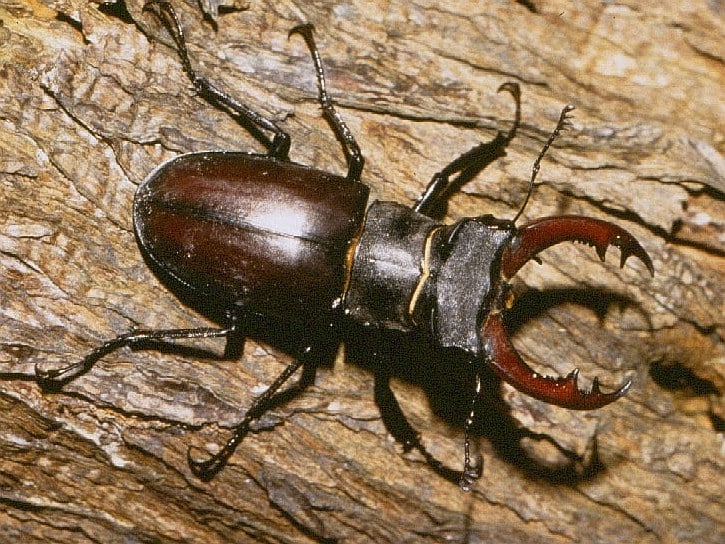
Big City Butterflies and the London Wildlife Trusts’ (LWT) continued monitoring of Lepidoptera and the ‘Thunderbug of the Suburbs’ (otherwise known as London’s iconic stag beetle) respectively, delivered more incredible accounts of sustained data collection supported by a large network of volunteers. Though recording has developed considerably since the days of posting hand-written recording cards, as recounted by Matthew Frith (LWT), the spirit driving recorders and conservationists’ alike still runs strong. Whatever the basis of this drive, its reach stretches beyond the formation of any of the organisations gathered at LRD, likely into our primal need for the peace and familiarity of nature. Dr Sarah Knight discussed recent developments in understanding our connection to nature and how this primal reach directly impacts our mental and physical wellbeing today. She highlighted the need to ensure that in all nature-based solutions, local communities’ wellbeing must be considered and the wealth of engaged citizens must be utilised to drive this change.
To many recorders I’m sure Sarah’s insight that it is ‘perceived nature’ and not necessarily the real abundance of nature on one’s doorstep that has the bigger impact on mental wellbeing, came as no surprise. The more you can see and name, the easier it is to be immersed in nature, even in an urban setting. Many speakers shared avenues to explore to this end: for example, Maria Roberts and Keiron Derek-Brown, of the London Natural History Society updated us on many exciting opportunities for both LNHS members and non-members to increase their knowledge of the urban natural world, with upcoming talks covering fern identification, fish of the tidal Thames, site-specific talks, as well as the society’s first field recording day following the pandemic. A full programme of upcoming events can be found here. Steve Boulton of The Big City Butterfly project, shared how BCB engages different groups including the general public, land managers and policy-makers through recording days, habitat management, ensuring adequate acknowledgement, understanding and conservation of our moth and butterfly species.
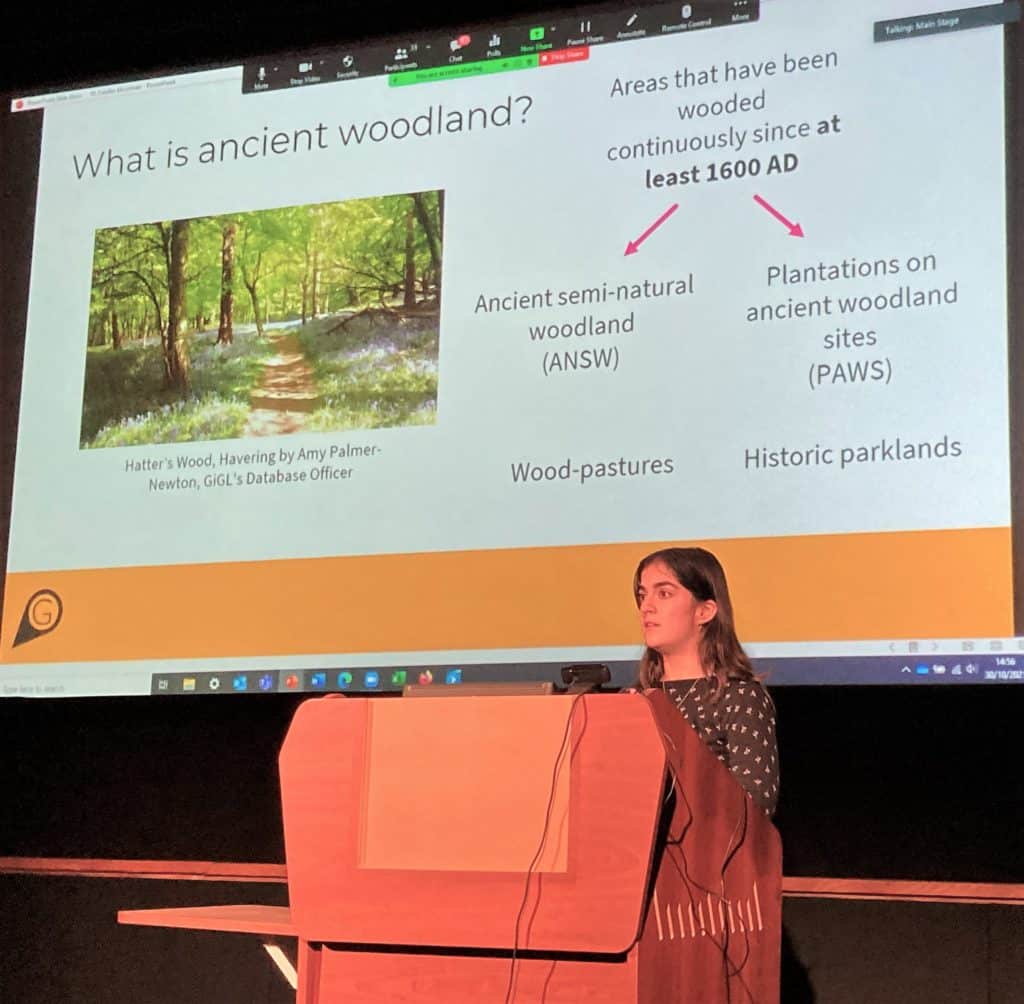
Similarly, Frankie Moorman, one of the newest GiGL recruits, put out the call for anyone with specific local knowledge to help with the project to update the Ancient Woodland Inventory to better reflect the fragmented state of London’s ancient woodlands and wood pastures. Frankie will scour old records, current maps and will visit some of these smaller sites – many of which, being smaller than 2ha, were omitted from the original dataset, and thereby help them gain the status needed for adequate protection.
The day finished with an interactive workshop led by Benjamin Town and myself. We hoped to frame the talks given within the context of the standard data workflow and to summarise the process that records sent to GiGL go through on their journey through validation, verification, aggregation and finally to the various uses shown throughout the day. The workshop provided an opportunity for attendees to ask their burning questions about recording, as well as the chance for GiGL to gain greater insight into our community’s recording behaviour. This will help us to better tailor our work to reflect recorder needs and current practices. We’d like to give a big thank you to everyone who engaged with the workshop.
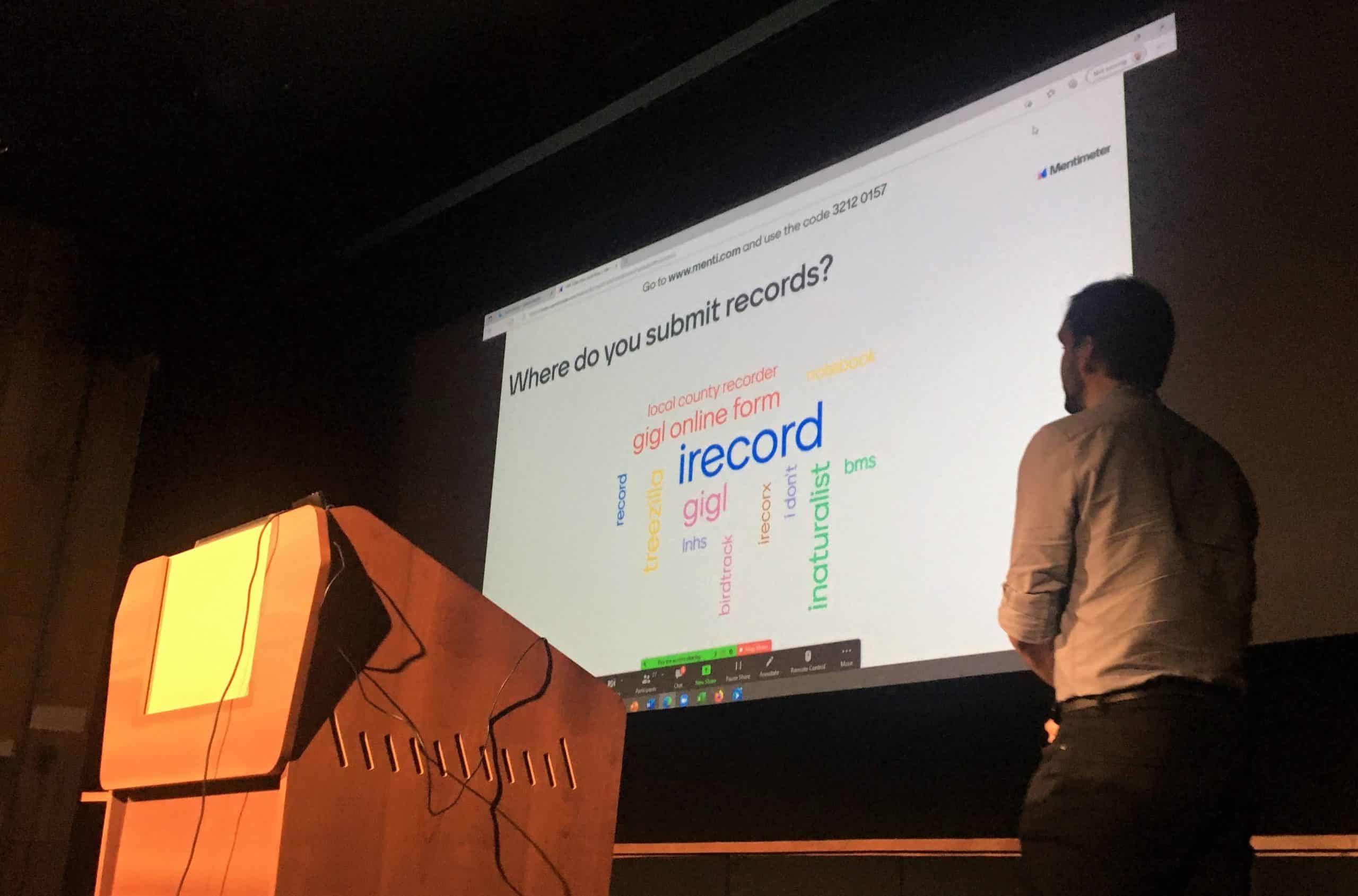
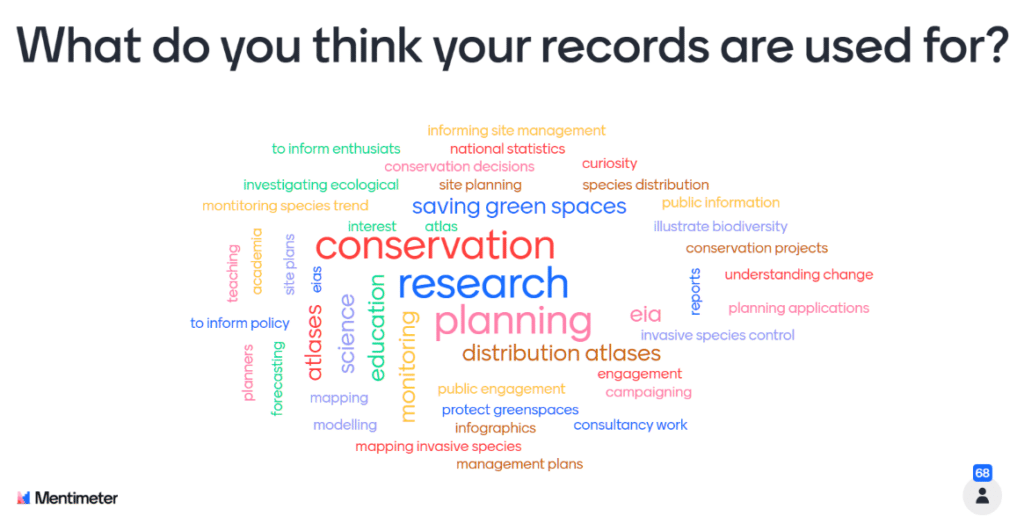
The world of 2021 may indeed feel like an unfamiliar place, but upon leaving LRD 2021, I felt that with the wealth of knowledge and experience that was gathered within the Flett, perhaps this isn’t a bad thing. The current state of the world presents new challenges which can and must be combatted with innovative uses of ecological data. LRD 2021 showed that there is no shortage of invention and inspiration within our community to achieve this and protect our urban nature now and into the future.
We’d love to hear feedback from anyone who attended the day to make sure that the next LRD can be an equal success both virtually and in-person. If you would like to complete our short survey, please follow the link here.
